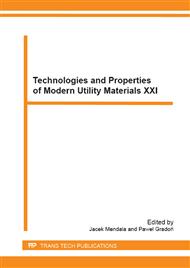p.21
p.25
p.29
p.35
p.39
p.45
p.49
p.53
p.59
Dissolution of Carbide Isolates in Acids Using Microwave Technique
Abstract:
The paper presents results of the investigation of SM5Ti3Nb2 steel carbide isolates. The acids and acid mixtures for dissolution of selected carbides phase isolates, using microwave technique were specified. This way of dissolution of carbide isolates reduced the time of mineralization to about 10-15 minutes. Presented methods of dissolution can be applied in the chemical analysis of carbide isolates, using atomic absorption spectrometry and optical emission spectrometry inductively coupled plasma. It is indicated the acids, using to removal of noncarbide metallic residue in isolates.
Info:
Periodical:
Pages:
39-44
Citation:
Online since:
December 2013
Authors:
Keywords:
Price:
Сopyright:
© 2014 Trans Tech Publications Ltd. All Rights Reserved
Share:
Citation:


